Wilderness therapy and adventure therapy are both mental health interventions that are typically geared toward at risk teens, or those with behavioral or mental health challenges for whom traditional therapy has been unsuccessful.
Nearby Rehab Centers with a Wilderness Setting
Loading visitor information…
What are Wilderness Therapy and Adventure Therapy?
Wilderness Therapy
- Setting: Remote outdoor environment
- Activities: Primitive camping, long hikes, fire cooking
- Duration: Multi-day or extended stays
- Purpose: Build grit, resilience, perseverance through survival-based challenges
- Group Work: Focus on teamwork, shared hardship, counselor-led routines
- Overnight: Yes, live outdoors throughout the program
Adventure Therapy
- Setting: Indoors or outdoors (more controlled)
- Activities: Ropes courses, rock climbing (with safety gear) Duration: Daytime or scheduled activity blocks
- Purpose: Build self-esteem, teamwork, and emotional insight through structured challenges
- Group Work: Group exercises focused on trust and communication
- Overnight: No – part of day treatment or outpatient care
Both wilderness therapy and adventure therapy involve engaging teens in challenging physical activities that are intended to help them increase their resilience, self-reliance and self-esteem. Meeting physical challenges also helps teens develop positive interpersonal relationships through teamwork and through interactions with counselors and other team members.
Wilderness therapy takes place in an outdoor environment that is often remote and involves taxing physical activity such as camping out in the open with primitive provision and few physical comforts. It includes strict daily routines, long, arduous hikes and cooking food over an open fire. It often involves the setting up and taking down of a new campsite each day.
Adventure therapy can take place either outdoors or indoors, and while it also involves some challenging physical activities, these are more structured and less extreme. For instance, adventure therapy might involve navigating an outdoor ropes course or climbing on an indoor rock wall using a harness rather than climbing on rocks in the wilderness.
Adventure therapy doesn’t include overnight stays in the outdoors. It may be part of a daytime treatment program such as a partial hospitalization or intensive outpatient program, where it is used as a recreational component of treatment.
The main difference between wilderness therapy and adventure therapy is that wilderness therapy involves living outside for an extended period in a rugged, often difficult environment. The wilderness setting itself is used to develop the participant’s inner strength, grit, determination and perseverance. Adventure therapy is less strenuous. Additionally, adventure therapy activities may be included in wilderness programs.
Wilderness and Adventure Therapy Models and Techniques
Wilderness Therapy has two main models. In the expedition model, participants hike daily from one location to another, setting up a primitive camp in each location. This nomadic lifestyle takes place over two to three months.
In the base camp model, participants may hike daily for shorter distances or engage in other outdoor activities, such as canoeing, but they return each evening to a permanent campsite where they have showers and larger, more comfortable tent structures that may be heated in colder weather. Participants still engage in making campfires, cooking and experiencing communal living. Base camp programs often last between six and 12 weeks.
Wilderness therapy programs involve regular group counseling sessions and intermittent individual counseling sessions. Most programs have systems for maintaining communication between teen participants and their parents, such as letter writing and phone calls. Sometimes family counseling takes place through video conferencing.
Adventure therapy camps focus on challenging but fun activities and include group work that is focused on teamwork and problem-solving activities. The activities encourage teens to take personal responsibility for their behaviors and learn how to better manage their emotional responses.
These programs place more emphasis on successfully accomplishing positive behavioral change activities with less emphasis on exploring past dysfunctional behavioral patterns. The adventure activity itself is deemed to be therapy, so there is less time spent discussing a teen’s past issues. This follows an experiential therapy model that uses activities to elicit and heal emotional issues.
Adventure therapy techniques can include daytime outdoor expeditions and activities such as ropes courses, zip lines, obstacle courses and horseback riding. Many activities are group oriented. Others can be done solo, such as scavenger hunts and orienteering, wherea person navigates rough terrain using a compass and a map that leads them to various checkpoints.
What Can Wilderness Therapy Help With?
Wilderness therapy and wilderness programs are used to treat mental health and behavioral issues, including:
- Anxiety
- Depression
- Substance abuse
- PTSD
- Anger issues
- Conduct disorders
- Trauma
- Suicidal ideation
Wilderness therapy addresses substance abuse and mental health issues in teens by removing them from their everyday routines, problems and unhealthy habits and giving them an opportunity to learn teamwork, cooperation and self reliance. It challenges them to find strengths within themselves that they may not realize they have and helps them learn to trust themselves and others.
Benefits of Wilderness Therapy
Wilderness therapy may benefit teen participants by helping them:
- Gain insight into their feelings, beliefs and motivations
- Control explosive behavior and learn to manage their emotions
- Develop coping skills
- Improve interpersonal communications
- Reduce negative thoughts and negative beliefs about themselves
- Improve self-esteem and self-confidence
- Take responsibility for their choices
- Develop goals and make plans to reach them
- Become more self-aware
- Improve physical fitness
Many of the benefits of wilderness therapy are gained by engaging in group activities that require teamwork, cooperation and trust for others. Spending time in nature and away from electronics gives teens an opportunity to reflect, reassess and make better choices about how they want to behave and interact with others in the future.
Why is Wilderness Therapy So Controversial?
Program Related Death and Abuse Reports
Wilderness therapy for teens has been controversial ever since its inception in Utah during the 1960’s. Wilderness therapy began as a survival skills training course at Brigham Young University in Utah and was expanded and made into a business by an alumnus of the university.
The first wilderness therapy program was billed as a “tough love” rehabilitation program for teens. Run by a former special forces officer, the program used military-like discipline and routines and taught teens survival skills in the Utah desert. The teens had to make a 500-mile hike carrying a heavy backpack, and they had to sleep on the ground.
Such strenuous activity and difficult conditions became the norm for wilderness therapy programs, and unfortunately from the early days of the programs through today, such conditions have led to deaths from exposure, dehydration, stroke and neglected medical issues.
In a 2001 article, the New York Times reported that there were 31 deaths reported at wilderness camps in the years between 1980 and 2001. A University of Pennsylvania journal, The Regulatory Review, reported in 2023 that some wilderness programs currently in business do not provide adequate counseling for participants and don’t have enough qualified mental health professionals.
However, it’s important to differentiate between these “wilderness camps” and licensed, accredited, and well regulated wilderness therapy programs that offer robust, evidence-based therapy programs for youth with mental and behavioral health challenges.
Need for More Oversight and Regulation
There are no centralized state or federal databases to track reports of abuse allegations or the closings and re-openings of wilderness programs following allegations. In 2022, a bill was introduced in Congress to create a framework to regulate wilderness programs, but it failed to get out of committee and was never passed.
Some states have stepped up to regulate their own wilderness programs. Utah passed one of the first state statutes to address many aspects of wilderness programs such as rules for providing protection from the elements and adequate water and food provisions for program participants.
In 1996, several wilderness programs joined together to form the Outdoor Behavioral Health Council, an industry organization that sets standards for best practices, effective treatment, and evidence-based research in the field of outdoor behavioral healthcare, including adventure therapy and wilderness therapy programs.
They also created the Outdoor Behavioral Healthcare Research Cooperative (OBHRC) to conduct research related to industry issues. In 2013, OBH joined with the Association of Experiential Education to create accreditation standards for outdoor behavioral healthcare programs. There are approximately 20 accredited wilderness therapy programs today.
Involuntary Transport Services
Another controversy for the wilderness therapy industry involves the practice of involuntary youth transport services. These services provide the means for getting about half of all the teens in wilderness programs to their program destinations.
Many parents rely on these transport services to come into their homes, often in the middle of the night, and coerce or forcibly take their teen to a program location because they feel that the teen would not willingly go otherwise. Some teens have reported being traumatized by this practice, and there are many social media stories covering this viewpoint.
However, some teens do not see the practice in that way, and some say afterwards that they are glad they were made to go into a program, even forcibly. A 2015 report in the Child and Youth Care Forum journal found that the use of a transport service had little effect on the outcome of the treatment for the 350 teens studied.
Limited Parental Communication and Access
Complicating the issue of possible neglectful or abusive treatment in wilderness programs is the fact that teens are cut off from the outside world, with no direct access to cell phones or other electronic devices, and they often have limited opportunities to communicate with family members.
Some programs only allow communication via letters, and these may be read by counselors or other program staff. However, this practice is less stringent today than it was in past years, and some programs now allow scheduled phone calls and video conferencing. Some also have scheduled family visitation days, especially in base camp model programs that are not as remote and rugged.
Despite these concerns, high quality wilderness therapy programs do exist and can offer proven results for teens who are struggling. Parents and caregivers who are considering an adventure therapy program for their teen must do their due diligence to find the program that is aligned with current best practices in adolescent mental and behavioral health care.
With the right program the outcome can be truly life changing for your teen.
Addiction Centers That Include Wilderness Setting
| Name / Address / Rating | Description | Treatments / Payments / Programs | Review / Contact | Images |
|---|---|---|---|---|
9
Top 10 Rehab In Arizona
| Back2Basics Outdoor Adventure Therapy is a drug and alcohol rehab in Flagstaff, Arizona. This facility offers residential addiction treatment and sober living for adult men aged 18 through 35. This Back2Basics residential program provides a combination of counseling, addiction treatment, and outdoor recreation activities. Residents engage in hands- | Treatments Programs Payment Options | Our son reached the 4 Year sober mark in July (2025)! Don’t want to think about where he/we would be without B2B! Fighting his Fentanyl addiction with 30 day ‘clinical’ facilities was not working…like sooo many have figured out. B2Bs model of not only working through the obvious detox and therapy needs but adding that critical piece of introducing these young men to how to live as a sober person was/is the game changer. Their outdoor adventures/hikes/activities/camping, weekly community service, being responsible for daily chores, the self accountability that is expected, physical fitness and more is what truly takes these young men from the dark place they feel trapped in to a place where they feel that they are a functioning, positive member of society! Thank God for B2B!
Darren Stober
1 month ago
I highly recommend B2B! My experience was amazing!! I really enjoyed the hybrid way of treatment with the weekend hiking trips, therapy, meditation, and daily recovery activities. The staff were very friendly, supportive, and helpful with my journey. Shout out to Cade, Andrew, Brady, Reed, Dave and Fransisco! Also THE BEST therapist Keelan 🙂
Vlad Zakharov
1 month ago
B2B gave me a solid foundation to stay strong in my recovery. I learned how to build and rely on a community, and I gained valuable tools for processing my thoughts and emotions. The support from both staff and peers was crucial in my journey. I m really grateful for the growth I experienced, and the impact it s had on my life moving forward will last forever.
Cole Richards
5 months ago
| 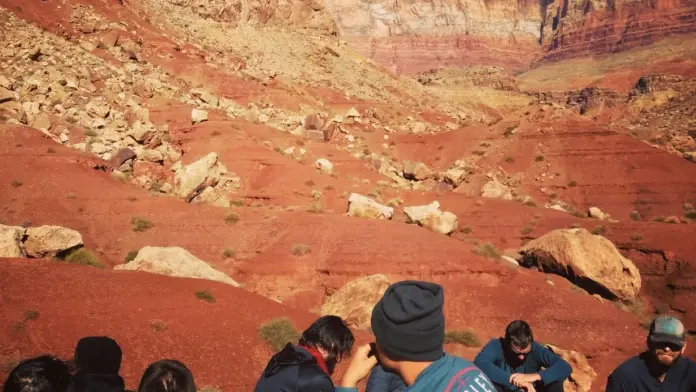
|
2
Top 10 Rehab In Maine
| Summit Achievement in Fryeburg, Maine, provides a special program for 13 to 20 year olds who are struggling with substance abuse or experimentation. This licensed and accredited residential treatment center is located in the stunning White Mountains region of Maine. Through the integration of classroom academics, adventure therapy expeditions, and | Treatments Programs Payment Options | A thoughtfully run, tightly coordinated and integrated program offering an amazing synthesis of wilderness skill-building, therapy, and academics. Great bonding opportunities with peers; caring, responsive staff. Anyone attending this program is in good hands and has a serious opportunity for positive growth and learning, healing, evolving.
Suzanne Church
3 weeks ago
My son completed the Summit achievement program. He’s turned out to be an incredible young man. I can say 100% without a doubt that he and we as a family may not even exist today without the help of the Summit Achievement family. My wife and our therapist were pushing hard and I was skeptical at first. However, this program and the incredible team changed the trajectory of our lives together. I am confident when I say we could not have survived without this program. Don’t hesitate like I did! Eternally grateful to the Summit family!
Many thanks!
Jeff and Joan
J P
1 month ago
. i stayed 11 weeks in 2015 and while i was there i went from being unable to control myself physically or mentally to becoming a group leader, extremely passionate and the most physically/mentally strong i possibly could at my age of 15. to this day i still think of the mountains i climb, lessons i learned and just the full on experience of all of it combined. an amazing place i was blessed to experience and would reccomend looking into for anyone who needs a change in life.
Marfeet Roeder
1 month ago
| 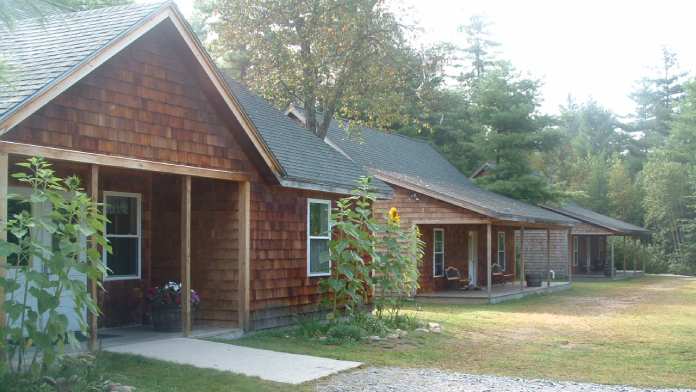
|
Legacy Outdoor Adventures is a residential treatment center located in Loa, Utah. They treat men and women ages 18 to 40 for substance use disorders (SUD) and co-occurring mental health disorders. The center accepts many major insurances. They’ll work with you to get your treatment preauthorized. They’ll often take a downpayment instead of the | Treatments Programs Payment Options | This place changed my life!!! I came to Juniper canyon in February of 2022 absolutely broken and defeated. This place got me sober (and kept me sober) changed my entire perspective on life and what it means to be me, and shaped me into the woman I am today. My most sacred and special moments were spent in Utah with these absolutely incredible people and I am forever grateful. I have a beautiful, fun and full life today that would not have been possible without Legacy.
Camille Siler
10 months ago
This place is definitely one of the most amazing treatment centers The people there all of them the staff the students or peers and therapist are the best so thankful to have had the opportunity to go there
Mhsinger 15 (Mhsinger15)
10 months ago
The love that this team has for their community, their team, and most importantly.. their clients, is admirable.
Kaysha Sorensen
1 year ago
| ||
Evergreen, Colorado | Spero Recovery Center is a men’s residential treatment program in Evergreen, Colorado. You can access ongoing support to overcome substance abuse and dual diagnosis among peers on similar paths. They accept various private insurance plans and offer verification assistance through their website. Cash or self payment options are available. They enc | Treatments Programs Payment Options | Anybody struggling with addiction issues please check into talking with the absolutely amazing team up here at Spero in Evergreen about getting you in.
Second time through for me, graduating in 2 days. This place is gorgeous, serene, and has a great team to get you or yours on the track they deserve in life. Staff is always willing to bend over backwards. Thank you Spero. Thanks Franky! “)
terpenes & tannins
1 month ago
Entering Spero Recovery Center as a client changed my life. The staff, facility, programing and clinical team were absolutely amazing and redirected the trajectory of my life. I stayed for 60 days and the phase 2 (second set of 30 days) portion provided additional experiences and therapy. I highly recommend Spero Recovery Center and making the move to change your life.
John Alwine
2 months ago
Thank you Spero!!!! From the staff to the facility! Life changing experience. Shoutout to Marty, Ryan, Chris S., Matt and Tracy. The knowledge and guidance was spot on. Last shoutout to Shaun. The river rafting and hiking experience was amazing. Everyone there should experience that adventure. “Wilderness Therapy” was so special!!!!
I would recommend this place to anyone who is in need of recovery!!!! They care!
-Chet Gilliland
Chet Gilliland
2 months ago
| 
3 

|
Towaco, New Jersey | Guardian Recovery – Montville Adolescent Center, located in , is a private alcohol and drug rehab that offers treatment for a variety of substance abuse addictions including alcoholism, co-occurring mental health disorders, and opiate addiction. They offer supervised medical treatment to safely manage withdrawal symptoms during detoxification, r | Treatments Programs Payment Options | The staff is extremely helpful and patient when it comes to helping individuals out with whatever their needs may be. They take the time to make sure Guardian is a perfect fit, and answer any questions you may have. I know that I can trust Guardian and make sure people are in good hands!
Muge Gore
4 months ago
This place is actually amazing I went here for treatment and it was one of the best things to happen to me I’m over 300 days sober because the amazing staff taught me a lot of important information on why drugs don’t always work in your favor. One of my main reasons for staying sober if my favorite staff there Adam Schaffer any time I needed to talk to him or get something off my chest he was always there to talk and is just a straight forward person who gets what people go through and is just very sympathetic and again thank you too all the staff for my amazing stay
Gavin Bralczyk
4 months ago
Guardian team – starting with Melissa and Adam, and throughout your entire support staff, including the very friendly kitchen staff who fed us well when we visited our daughter, thank you for the genuine care you demonstrated everyday. This is a tough situation for all of us, and we unfortunately have experienced other facilities, and none are on this level in the way you approach caring for our children. I highly recommend parents do their homework and trust Guardian.
Thank you Guardian!
Steve Katz
8 months ago
| 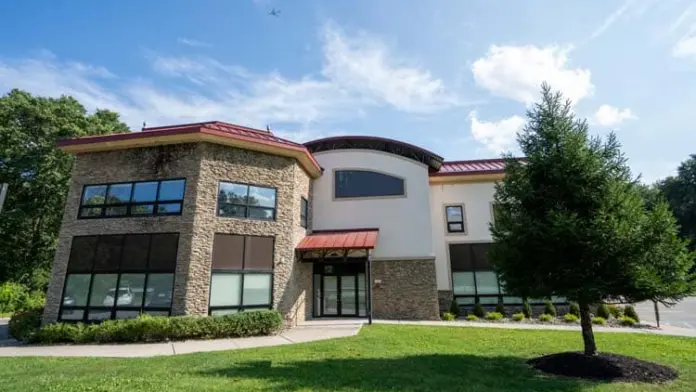
10 10 
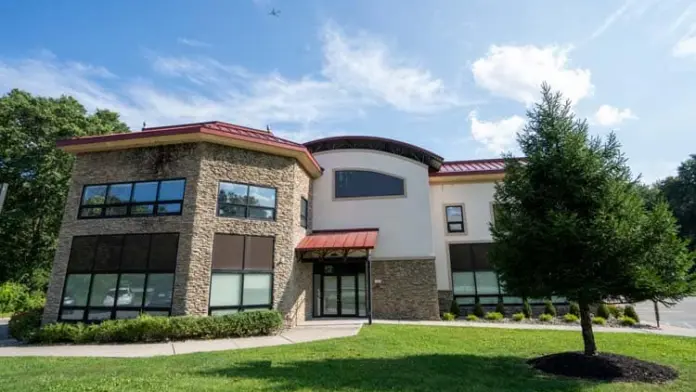


|
Reno, Nevada | The Differents- Drug Rehab in Reno, located in Reno, Nevada is a private drug rehab center that specializes in the treatment of addiction rehab. | Treatments Programs Payment Options | The Differents is truly different than I expected, and different from the one other rehab facility I had experience with. This isn’t “captive sobriety “ as I described the other program. This is almost a resort setting, with a very small patient population and plenty of qualified and caring staff. The focus is on helping patients remember (or learn) that life is precious and living sober allows us to truly live. Outings are planned specific to patient interests and occur at least weekly. There isn’t total focus on one path, such as AA or NA; it’s a balanced program incorporating several approaches to long-term sobriety. The on-site recreational facilities and ability to hike and explore the surrounding area round out the positive, nurturing atmosphere. Highly recommended.
Connie Stafford
1 month ago
Good people great php program
cody murphy
2 months ago
What a beautiful, peaceful and loving place to heal 🤍☀️🫶. Don’t wait if you’re considering healing some of those wounds. I couldn’t be more grateful for what I gained from going here. I have so much love and gratitude to The Difference staff for their kindness and program they provide.
Aura P
2 months ago
| 
8 8 



|
Hoboken, New Jersey | Guardian Intensive Outpatient Treatment – Hoboken, located in Hoboken, New Jersey is a private alcohol and drug rehab that offers treatment for a variety of substance abuse addictions including alcoholism, co-occurring mental health disorders, and opiate addiction. They offer supervised medical treatment to safely manage withdrawal symptoms durin | Treatments Programs Payment Options | I had an amazing experience all around!!!
Kevin Richards
1 month ago
I called guardian recovery at around 8 at night, they were very attentive and eating get me right to pine tree detox. (They even offered to uber me there.) once I got there I couldn’t have had a better experience, detox wasn’t fun, but the techs and nursing staff made it go as smoothly as possible. Upstairs at pine trees 28 day Residential program was just what I needed, I felt comfortable and supported my whole stay. Would definitely recommend 1000%
Kaitlyn Bernard
1 month ago
Attended here for 5 months. Best therapy experience I have had so far in my life. Small intimate group therapy. Constructive one-on-one therapy sessions. Very friendly and supportive staff. Lots and lots of in depth material offered to clients to help us learn how to help ourselves. I met some of nicest people I have ever met in here between my fellow clients and the staff. I learned a lot of strategies to take care of my health in all aspects of life. I learned a lot of coping skills to help with my mental health.
Mpho Anderson
4 months ago
| 
4 



|
Newport, Tennessee | Summit at Harmony Oaks, located in Newport, Tennessee, offers a full continuum of care for adults battling mental health disorders and dual diagnosis. You can access medically assisted detox, residential treatment and various outpatient programs. They accept most major insurance plans. You can also self pay for treatment. If you need assistance wit | Treatments Programs Payment Options | The staff at Summit was fantastic and truly cared about me as a person. I did an assessment at another facility and I was very unimpressed, but with Summit it felt like home each step of the way. I couldn’t have healed better anywhere else
Serena Henry
3 weeks ago
I had an excellent experience here at Summit Harmony Oaks. The group therapy discussions were worthwhile. The one on one therapy sessions were eye opening. I made discoveries about myself and a few breakthroughs that should forever change my life in a positive way. Motivation is the key. I came here motivated to make a difference in my life, and did just that. The more you give, the more you’ll get out of your time here.
Brett Callero
1 month ago
Asking for help in a time a need can be one of the most difficult things a person has to do. The team at Harmony makes getting help after making that difficult step, so very easy. The entire staff is welcoming and has a heart for helping those of us that are struggling. Thanks to Harmony, I’m able to start, the rest of my life on the right foot. I am forever in your debt for helping me through one of the toughest moments of my life.
Ernest Brooks
1 month ago
| 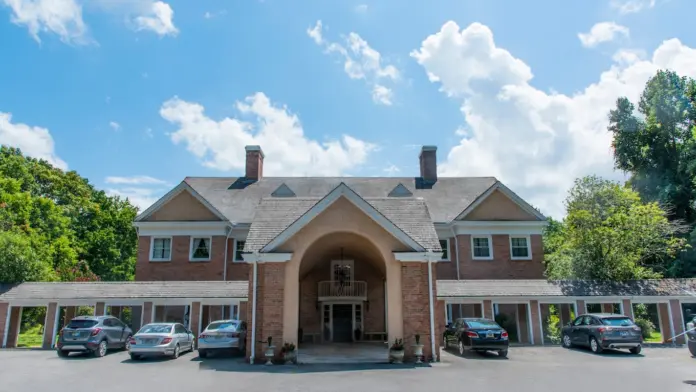
4 

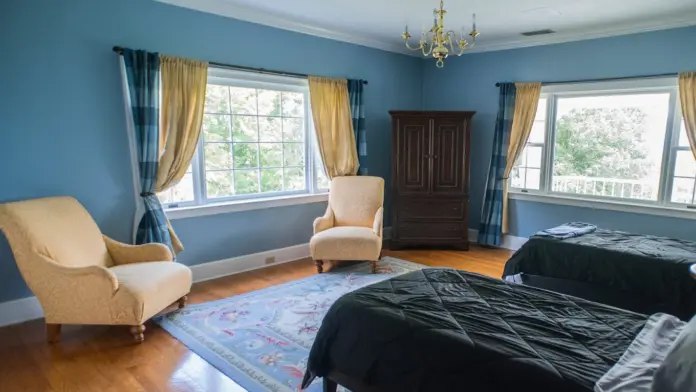
|
Waukesha, Wisconsin | Newport Academy’s Teen Mental Health & Addiction Treatment center is based in a quiet and secluded corner of Waukesha, Wisconsin. They provide outpatient programs specifically designed for teens aged 12-21. When you enroll, you can choose from partial hospitalization (PHP) and intensive outpatient programs (IOP). It all depends on your circum | Treatments Programs Payment Options | We highly recommend Newport. We were in a position where we needed “a little more mental health help” with our teen. We enrolled her in an IOP which is where she goes to school but then has therapy for 3 hours, 3 days a week. They helped her build confidence in herself and restored her self-love.
People often ask “why do a PHP or IOP”? The reason for us, was it jump started her on the right path. Think of it like staring a work out. If you do a “boot camp” and exercise intensely, it helps kick start your weight loss/muscle building skills. Same goes for mental health.
The staff was always kind, courteous and professional. My daughter really loved her therapist, Jen. She connected with her. My daughter had seen other therapists outpatient (not through Newport) but always felt like they were “just doing their jobs” and didn’t “actually care about her.”
Not so at Newport. You can tell EVERY. SINGLE staff member was invested in her.
They also worked with us, as our insurance did not cover their services. They outlined a financial plan that was doable for our family.
They are “the best” for a reason. If you are even remotely in need of their services, set up an appointment. It’s the first step to healing. ❤️
jami graber
1 year ago
I researched Newport Academy on line and was impressed with the different services and therapy offered. The reviews that I read of youg people and how Newport Academy has helped change their life. My son and I did a tour, and met the staff. We both had seperate interviews as to what we were looking for, as we left my son immediately said to me “I want to go there mom, I really like the staff”. Here we are several months later and my son loves the people, they are the most welcoming, empathetic, supportive not justfor my sons needs but to support our family and teach us the tools to build strong healthy relationships. My son was able to participate in Horse therapy at Equine and he discovered the love for horses, and confidence that he gained there through the program. He is looking forward to continue his journey at Newport Academy through volunteering and hope to work their as an adult, he wants to empower other young people to push through the difficult stuff because the rewards are for life. As a mother i immediately felt safe to know that my son was coming to a good place because they truly care. I am looking forward to continue our journey with the staff and am excited to see where this journey takes us. I am so grateful to the whole team for what they have helped us achieve. With love ❤️ always.
Vincenza L
2 years ago
very friendly staff very motivational and hard workers they even got me caught back up with school in 6 weeks even tho i was behind a year i would highly recommend for others
Nico Lopiparo
2 years ago
| 
3 


|
Shelton, Washington | Rites of Passage operates an expedition-based wilderness therapy program designed for adolescents ages 11-17 and adults ages 18-30+ who are struggling with a variety of emotional and behavioral concerns. Rites of Passage is located in Shelton, Washington. With a staff to student ratio of 1:3, sets Rites of Passage apart from other programs. The pr | Treatments Programs Payment Options | This program changes lives! I have seen many youth (and older adults too) struggling in life, gain clarity and direction with this program. Existing in the wilderness for even the shortest amount of time can really change thought processes and behavior. The owners, therapists and guides all have a genuine concern for the participants’ well-being with life on trail, and once they return to the ‘real world’. I even know a few former participants who came back to become guides themselves. Nature heals and soothes!
Erin Keil Peters
2 years ago
Saved my daughter’s life
Eileen Wain
5 years ago
Let the wilderness do the work!
luis ofray
7 years ago
| 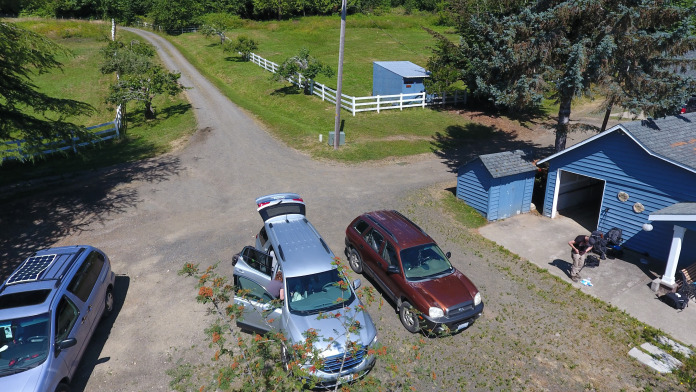
|
Leesburg, Virginia | Newport Institute for Young Adults – Monticello, located in Leesburg, Virginia is a private alcohol and drug rehab that offers treatment for a variety of substance abuse addictions including alcoholism, co-occurring mental health disorders, and opiate addiction. They offer supervised medical treatment to safely manage withdrawal symptoms during d | Treatments Programs Payment Options | I stayed at Legacy house for adult women 18-35 this past spring. Having attended other treatment facilities and having poor experiences in the past, I was apprehensive of attending Newport, but upon my first 72 hours (please do give yourself time to adjust), I found the staff, clinical team and other clients to be some of the most supportive people I had encountered in a treatment space. The staff and clinical team were well-equipped to handle any issues from practical things/questions to intense emotional distress/triggers. Though I don’t trust quickly, I saw just how much they cared and clicked well with my therapist. I’ve been out for almost 3 months now (the length of my stay), and I can say that, though I still struggle, I am truly in the best place I’ve been in years– after having tried ketamine and TMS therapy for my depression previously. I still struggle, but I’ve been equipped with the tools necessary to help me support myself and reach out to others when I need it. Thank you Newport, for helping me save my life.
Sarah Michelle B.
2 months ago
Their hard work and their commitment to marginalized populations is admirable
L.P.
1 year ago
| 




|
New York City, New York | Bellevue Hospital – Opiate Treatment Program, located in New York City, New York is a private alcohol and drug rehab that offers treatment for a variety of substance abuse addictions including alcoholism, co-occurring mental health disorders, and opiate addiction. They offer supervised medical treatment to safely manage withdrawal symptoms during | Treatments Programs Payment Options | Bellevue Hospital – Opiate Treatment Program has no reviews yet. Leave a review.
| 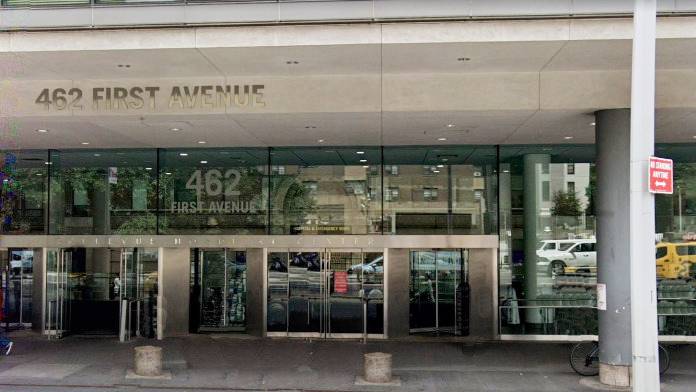
|
Orem, Utah | Wasatch Behavioral Health is a public organization that offers comprehensive behavioral health and substance use disorder (SUD) services to children, teens, and adults throughout Utah. One of their locations is this treatment center in Orem, Utah. This location offers medication assisted treatment (MAT), a youth outpatient and young adult program, | Treatments Programs Payment Options | Wasatch Mental Health – Orem has no reviews yet. Leave a review.
|






